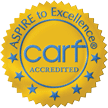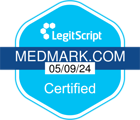The negative misconceptions that surround addiction, drug misuse, and the struggles of those who are dealing with it are all too common in modern day society. The stigma is so prevalent that it carries many negative consequences, especially for those who are too afraid to ask for help for fear of being damagingly labeled.
What is Stigma?
stig·ma
ˈstigmə
noun
a mark of disgrace associated with a particular circumstance, quality, or person.
“The stigma of drug addiction will always be with me.”
| synonyms: | shame, disgrace, dishonor, ignominy, opprobrium, humiliation, (bad) reputation |
Stigma is a set of negative beliefs that society tends to apply to a certain subject matter or set of people. Stigmatic views are meant to be disparaging and to shame people, which can be harmful and discriminatory. These negative stigmas are rarely never based on facts, but instead, are perpetuated by outdated misconceptions and assumptions about things that are very complex. Something as complex as addiction carries an enormous stigma.
The best way to get around these harmful stigmas surrounding addiction is to educate the public about matters like mental health and drug misuse using fact-based statistics and science. Many people hold negative views about addiction and those who are dealing with it; they are family members, friends, and peers. They may use certain language that can spread these negative perceptions, and when it comes to addiction, language matters. Learning more about the science behind addiction can help people stamp out these offensive labels that are demeaning and derogatory of those who are suffering from the disease.
Word Usage
Changing the way in which we use words when speaking about addiction is an important step in helping reduce the stigma surrounding this illness. Choosing to use non-stigmatizing language allows people in recovery to choose how they want to identify themselves in regards to their substance use disorder. While we can’t solve the problem of the underlying stigma surrounding addiction by just changing the words we use, it’s one way we can break through society’s negative perceptions about prevention, treatment, recovery, and substance use disorders. By doing so, people will begin to accept addiction as a disease, and those who have substance use disorders will not feel shame in seeking out help.
| Harmful Words | Better Terms |
| Junkie, Alcoholic, Addict | Person with a substance abuse disorder, person experiencing a drug problem |
| Drug Abuse | Drug misuse, harmful/problem/risky use |
| Being “clean” | Testing positive/negative |
| Drug habit | Substance use disorder |
| Self-help Groups | Recovery support groups |
Stigma’s Effect on Treatment
The stigma surrounding addiction does more harm than what is apparent on the surface. It goes far beyond name-calling and hurting someone’s feelings. Those who face addiction are often plagued with shame, which makes it harder for them to realize they are facing actual substance use disorder. Many people wrongly attribute weak morals and discipline to addiction. Those who are uneducated about addiction speak of it as it if were a mere choice, disregarding the chemical and internal way drugs can alter the human brain. Because of this, people are less likely to seek help with their addiction for fear of being ignorantly labeled. According to the NSDUH, about 21.5 million adults aged 12 or older battled substance use disorder in 2014 but only 2.5 million received proper treatment. While addiction has many hereditary and environmental connections, addiction can affect anyone from any walk of life. People should not feel ashamed to seek help for a medical condition just because society has upheld false beliefs for so long.
When someone is faced with substance use disorder, they often feel isolated and alone, causing chronic stress and poor mental health. They may feel ostracized by society and are forced to deal with their addiction on their own in silence. Thus begins a vicious cycle of drug misuse, depression, and further isolation that can become very difficult to rehabilitate without extensive treatment. The stigma that surrounds people who are battling addiction further creates barriers that keep them away from seeking help.
Due to the prevalent stigma surrounding addiction, it has also been difficult to implement changes in healthcare and state laws that would promote harm reduction associated with the disease. Healthcare providers are often times reluctant to help those with addiction, applying high premiums and copays on treatment, or not offering coverage for treatment programs at all. This issue also leads to high rates of major public healthcare issues and legislation surrounding the effects of drug misuse. Programs like needle exchanges, substitution therapies, and safe rooms could all decrease the risk involved with regular drug use. Many who still believe in the stigmas surrounding addiction feel that these programs further encourage drug use, despite evidence to the contrary. If society doesn’t take steps towards battling stigmas surrounding addiction disease, none of these factors will change, and more and more people will suffer.
Ways to Combat Stigma
Those who face stigma have reported experiencing it from friends, family, healthcare workers, and those in the general public. Feeling degraded and judged for having a disease is not only unfair, but it’s also discouraging and immoral behavior by those who inflict it. However, we can help those who are faced with these negative experiences reach out and get the encouragement and help they need and deserve. Lessening the stigma surrounding addiction is the first way to help people get the treatment necessary to help them break the cycle. Education is one way to start fighting back against these stigmas but offering compassion and support is also very important as well. Lending an ear to someone you know who is struggling can make a world of a difference to them. They are used to being constantly judged, and not being seen as people, but rather dehumanized and seen as their addiction. Speaking up when you see someone being unfairly mistreated due to their substance use disorder and educating others on the science behind addiction are also important factors in fighting stigma.
Get involved with a local addiction charity or start your own initiative to help give those who deal with addiction a voice in a world where they often feel invisible, unsupported and misunderstood.



